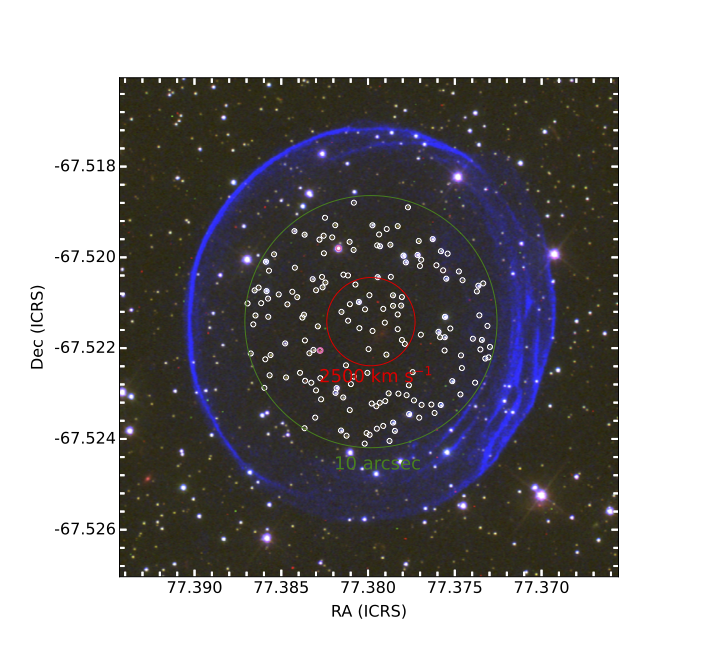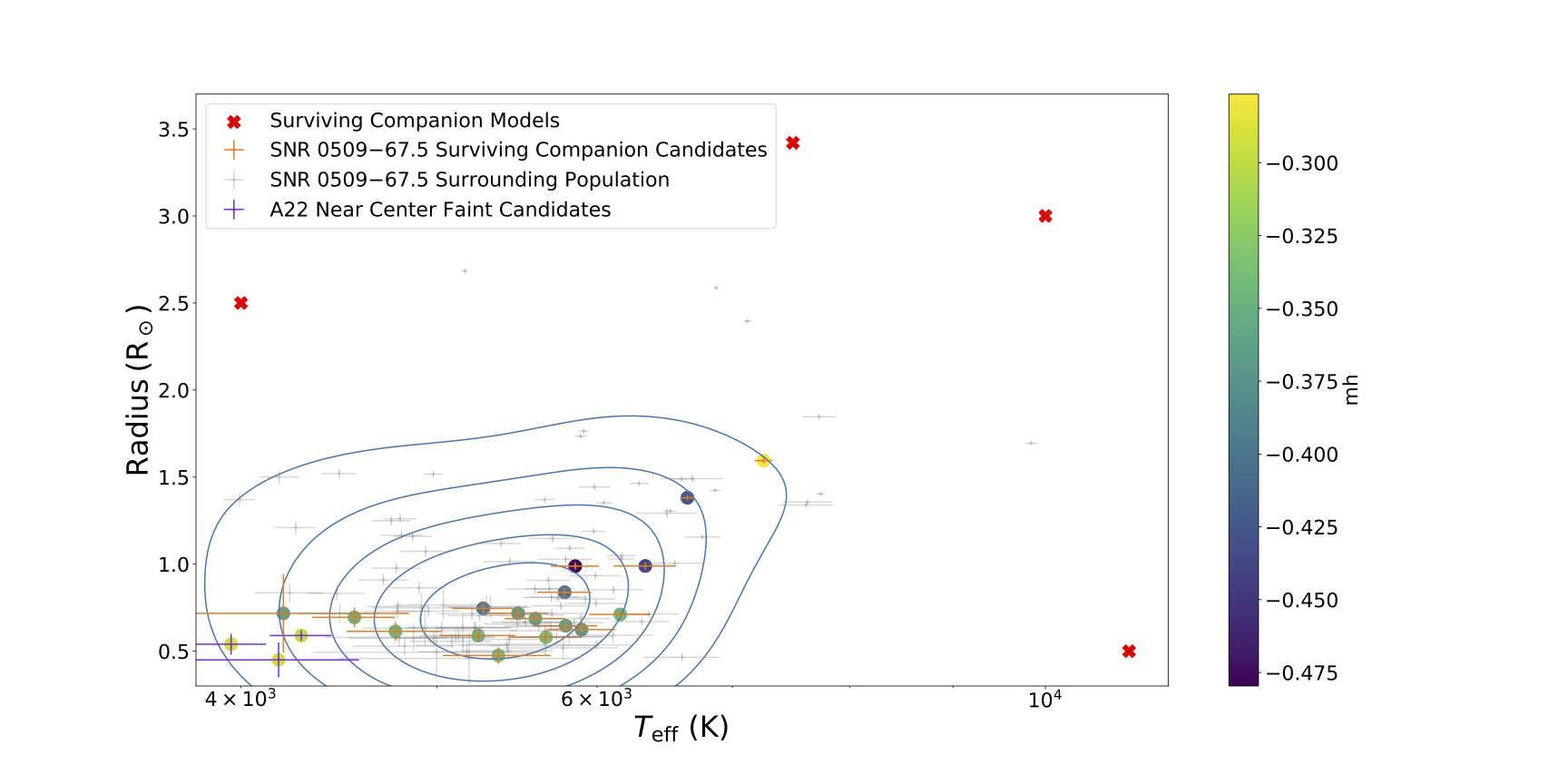A comprehensive SN Ia companion search in SNR 0509-67.5

An example outcome of the fitting process for one of the stars in the search region. The blue crosses show the photometric observations with the vertical spread showing observational uncertainty, and the horizontal spread shows the width of the filter used for the observation, corresponding to the rough portion of the spectrum probed by the observation. The transmission curve of each filters is shown in dashed purple. The black and grey regions show a distribution of spectra created by sampling the posterior distribution of constrained stellar parameters.

Radius vs. Effective Temperature and metallicity fits of stars within 4.2 arcsec of the hydrodynamic center of SNR 0509−67.5, the sample of potential surviving companion stars. The gray crosses show the surrounding control sample of nearby stars which we used to estimate the underlying temperature-radius distribution of the local stellar population, shown by the contours. The purple crosses show the three stars identified in A22. The red X markers show surviving companion models from we considered that were close enough in this space enough to be compared, with the other models too high in temperature or large in radius to be placed within the bounds of the figure.

